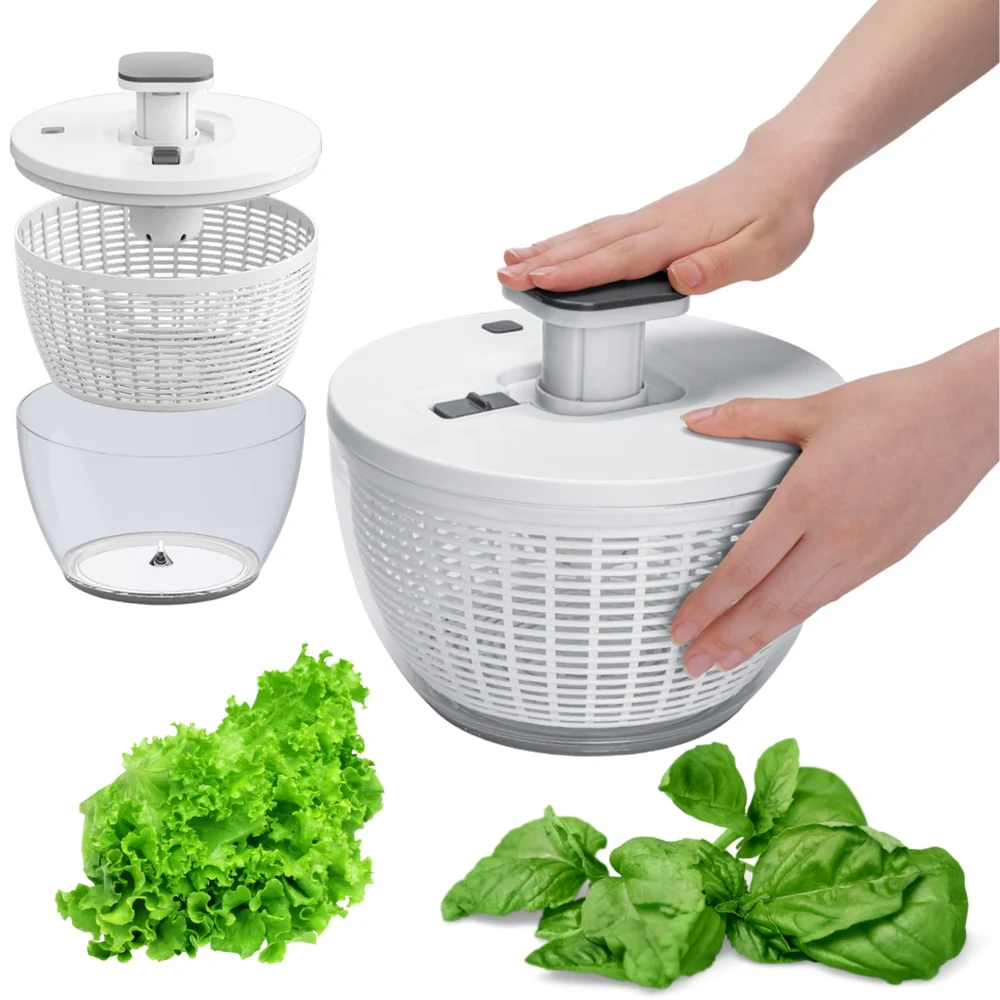In today’s fast-paced world, maintaining a healthy lifestyle often starts in the kitchen. Fresh salads, crisp greens, and perfectly washed vegetables are a staple of clean eating — and that’s where the vegetable spinner becomes a game-changer. Whether you’re a home cook, a health enthusiast, or someone who simply wants to save time, a vegetable spinner is an essential kitchen companion.
What Is a Vegetable Spinner?
A vegetable spinner, also known as a salad spinner, is a kitchen tool designed to remove excess water from freshly washed vegetables, fruits, or herbs. It works on a simple yet effective mechanism: centrifugal force. When you spin the basket, the motion flings water off the vegetables, leaving them dry and crisp — ready for dressing or storage.
If you’ve ever tried tossing a salad with damp lettuce, you know the frustration. Water dilutes the dressing and makes everything soggy. That’s why investing in a good vegetable spinner ensures your greens stay fresh, crunchy, and delicious.
Why Every Kitchen Needs a Vegetable Spinner
Many people underestimate the importance of this tool, but a vegetable spinner does more than just dry your greens. Here’s why it’s a must-have:
-
Saves Time – Instead of patting veggies dry with paper towels, the spinner does the job in seconds.
-
Preserves Freshness – By removing excess moisture, it helps your vegetables stay crisp longer in the refrigerator.
-
Enhances Flavor – Salad dressings stick better to dry greens, enhancing taste and presentation.
-
Eco-Friendly – You’ll use fewer paper towels, reducing waste.
-
Versatile Use – It’s not limited to leafy greens; use it for herbs, berries, pasta, and even beans.
How a Vegetable Spinner Works
A vegetable spinner typically consists of three parts:
-
A bowl (outer container)
-
A colander basket (where you place the vegetables)
-
A lid with a spinning mechanism
When you spin the handle or push the pump, the basket rotates at high speed, and centrifugal force pushes the water out through the basket’s holes. The water collects in the outer bowl, which you can easily pour out. It’s a simple design, but incredibly effective.
Types of Vegetable Spinners
There are different types of vegetable spinners to suit various needs and budgets:
1. Manual Spinners
These are the most common and affordable. They use a hand crank, pull cord, or push button to spin the basket. Manual spinners give you complete control over the speed and duration of spinning.
2. Electric Spinners
Electric models are perfect for those who want convenience. With the push of a button, your vegetables are dry in seconds. These are ideal for large families or professional kitchens.
3. Collapsible Spinners
If you have limited kitchen space, collapsible spinners are an excellent choice. They can be folded down for easy storage without compromising on performance.
4. Glass Bowl Spinners
These spinners look elegant and can double as serving bowls. They’re heavier than plastic versions but add a touch of sophistication to your kitchen.
How to Use a Vegetable Spinner Effectively
Using a vegetable spinner is straightforward, but a few tips can help you get the best results:
-
Do not overload – Wash in batches to allow proper airflow and spinning.
-
Spin multiple times – For extra-damp greens, spin twice for maximum dryness.
-
Empty the water between spins to ensure better results.
-
Clean immediately after use to prevent residue buildup.
Top Benefits of Owning a Vegetable Spinner
Here’s why owning a vegetable spinner can transform your kitchen routine:
-
Healthier Meals: You’ll be more likely to eat salads and fresh veggies when prep becomes easy.
-
Improved Food Storage: Drier vegetables last longer, minimizing waste.
-
Time Efficiency: It makes meal prep faster, especially for families.
-
Better Presentation: Dry greens look fresher and more appetizing.
How to Choose the Best Vegetable Spinner
When choosing a vegetable spinner, consider these key features:
-
Capacity: Choose the size according to your family’s needs.
-
Material: Plastic spinners are lightweight, while glass or stainless-steel versions are more durable.
-
Ease of Use: Look for smooth spinning mechanisms and easy cleaning features.
-
Storage: Collapsible designs save space.
-
Price: A good-quality spinner doesn’t have to be expensive — just durable and efficient.
Maintenance and Care Tips
Taking care of your vegetable spinner ensures long-lasting performance:
-
Wash all parts after each use.
-
Avoid using abrasive sponges that can scratch plastic surfaces.
-
Let it air dry completely before reassembling.
-
Store in a clean, dry place.
A well-maintained spinner can last for years and remain one of your most-used kitchen tools.
Conclusion
A vegetable spinner may seem like a simple gadget, but it’s one of the most practical investments you can make for your kitchen. It keeps your greens fresh, saves you time, and enhances the quality of your meals. Whether you’re preparing a light salad or washing herbs for dinner, this humble tool can make a world of difference in your cooking routine.

